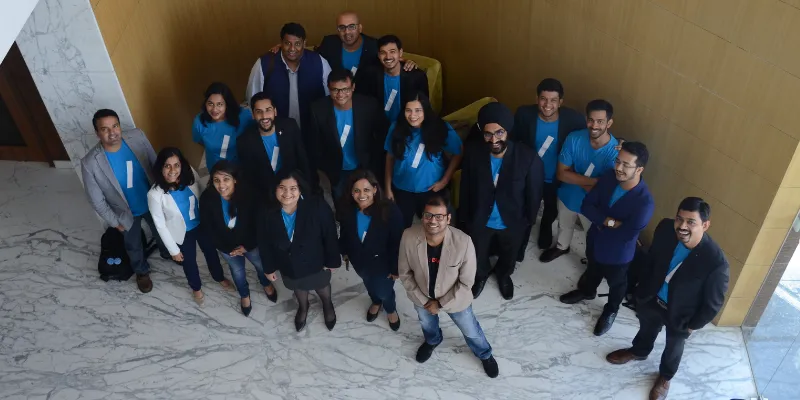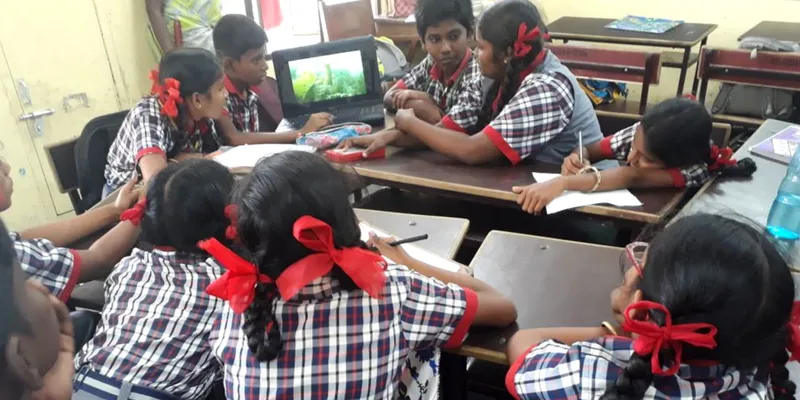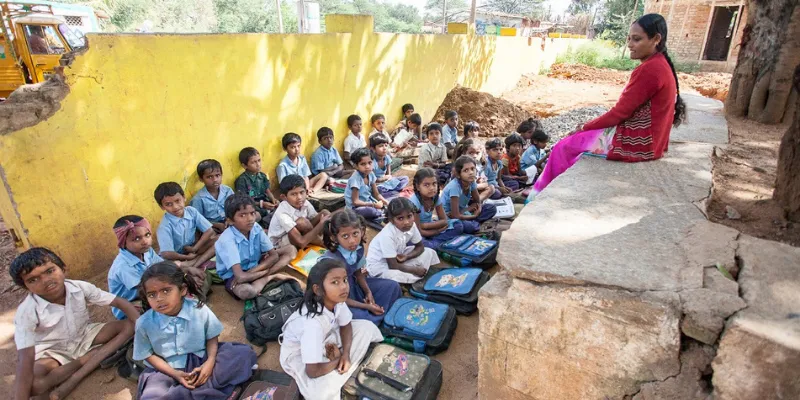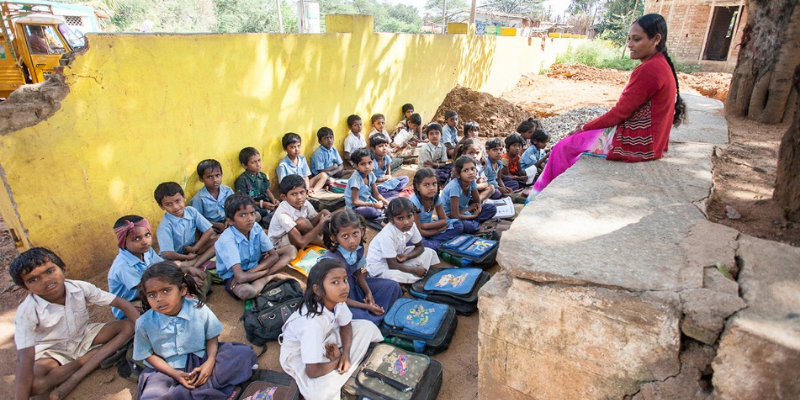From drab to glam: The evolution of the social sector in India
India is the 14th best country to be a social entrepreneur. What are the factors fuelling this growth and how can the unorganised social sector become more mainstream?

There are several prerequisites to sustain a healthy community. But, the most basic ones are perhaps food, clothing and shelter - or as we say in India, roti, kapda, makaan.
Yet, over 250 million individuals in India earn less than $2 a day, says the Economic Survey of 2017-18.
Without job security and personal safety, 90 percent of the 460 million strong workforce of the country work in the informal unorganised sector, adds the report. This means that more than 400 million individuals have improper training or poor skills, have little or no formal education, and earn low wages.
These problems may lead to conversations, but most conversations don’t end in solutions. However, change is afoot thanks to the development sector - be it in access to education or innovations in healthcare, sanitation, and agriculture.
Watch YourStory interact with the N/Core team to learn how non-profits can scale up
Over the past few decades, individuals across India have been stepping up to work in the social sector through for-profit social enterprises and NGOs.
In fact, the 2016 Best Countries to be a Social Entrepreneur report by Thomson Reuters Foundation ranked India ahead of China, Australia, and just behind Germany, in the 14th position.
Social impact and entrepreneurship are deeply rooted in the Indian ethos. Cooperative and community-owned business models like Amul and Fabindia have existed in India since the 1950s. According to 2014 data from the Central Bureau of Investigation, India is home to over two million NGOs - one for every 600 people.

Growth of social enterprises in India. Source: British Council
According to a British Council report, this change is a result of “growing awareness, support, and quality training and workshops available for social entrepreneurs and social enterprise leaders.” In fact according to a 2014 Intellecap study, $1.6 billion had been invested in 220 social enterprises from 2000 to 2014.
For instance, Teach For India is a 10-year-old non-profit that has made education accessible to over 50,000 children. Or, Akshaya Patra that has served over 1.7 billion mid-day meals across 14,000 government schools in India, creating change through a private-public partnership.
Gaurav Shah, Co-founder of the Indian School of Development Management (ISDM), says,
“The social sector holds exciting, promising opportunities that even a corporate job cannot afford - dealing with and tackling complex issues, travelling across the country and the world, and pay packages that are not shabby either.”
A social sector professional has been viewed as one who gets paid poorly, someone who has to ‘sacrifice’ their life by working in this space. Thankfully, this stereotype is changing. Gaurav says that a fresh graduate working in this sector would earn somewhere between Rs 2.5 lakh and Rs 6 lakh pa - not very different from engineers, architects, accountants, or even lawyers at the same level.
SocialStory spoke with non-profits, incubators, corporates, and social entrepreneurs, to understand this evolving sector.
The opportunity for growth

Social entrepreneurs get financial support from N/Core Foundation.
Sudha Srinivasan, CEO of N/Core, an incubator exclusively for non-profit startups, tells SocialStory:
“For us to grow as a country, we need equitable solutions for people belonging to the bottom of the pyramid. We need to build pathways out of poverty for a very large section of the population.”
The magnitude and scale of the problem ailing us cannot be solved by one organisation or a single theory of change. Rather, Sudha believes that “an army of people” will solve these challenges by looking at the disparity as an opportunity to create change and impact lives.
At present, India’s development sector needs innovation and vitality offered by vibrant startups with the potential to leapfrog problem-solving. Non-profits are working in multiple sectors, collaborating with the government, corporates, and philanthropists. More interestingly, the last decade has seen several youngsters bringing technology, vigour, and scalable solutions to this sector.

Involve brings digital and e-learning to classrooms.
Meet Divanshu Kumar, a 21-year-old IIT Madras student. He is also the founder of Involve — an education-focussed non-profit, which uses a peer-teaching model to improve the learning ability of students in low-income schools. He says,
“I have come to realise that a challenge as big as education can’t be solved through competition, but by collaboration. We need to collaborate to create a synergy of people present in different cities and villages of India. If I talk in business terms, no organisation to my knowledge has held more than five percent of the education market. So, very clearly, we have just started scratching the surface.”
Challenges to scaling up
Even as non-profit entrepreneurs attempt to solve these problems, bringing multiple opportunities to the less privileged, their support system is sparse. Access to funding and right inputs at early stages are the biggest bottlenecks for founders following a nonprofit model.
Sudha explains, “It is not enough to just have talent - you also need capital. Philanthropists and investors are not giving charity but are funding problem solvers.”
Apart from financial support, the government also needs to collaborate with non-profits and social enterprises to bring these solutions to the masses.

For instance, education startups are mushrooming in India with the likes of Krishworks, Leap for Word, and vChalk setting up learning centres in small villages and towns, inequality in education still remains a stumbling block. In rural India, nearly three-quarters of third graders cannot solve a two-digit subtraction problem, and this does not get any better as they reach a higher grade.
Poonam Shukla, Programme Director at Edmentum, a non-profit and edtech startup incubator, says that the government needs to step in to reduce this gap.
“It is very important for organisations to aspire to work with the government, and the solutions created by non-profits and education startups must be scalable, sustainable, and replicable,” she says.
Poonam believes that change within the sector can be achieved when startups aspire to integrate with the government, eventually leading the two to work together.
Multiple incubators like N/Core, Edumentum, Teach for India’s InnovatED, StartupED, Villgro, and Singapore International Foundation are mentoring non-profits and social startups, enabling them to scale and connect with State governments and Central government schemes across India.
Invest to impact

The past decade has been an encouraging story of growth for social entrepreneurship in India, with a rapidly growing micro-finance industry, and new and evolving business models in other sectors.
Impact investor Geeta Goel, who heads the impact arm of Michael and Susan Dell Foundation across the US, India, and South Africa, says impact investment is a “thriving space” and that the complex problems faced by India should not be seen as an insurmountable challenge but rather as an opportunity to create true ground-level impact.
“What excites me about the development space is the fact that you can actually live and see the change in a space like this. As a sector, we need to change not one life at a time, but several lives at scale. Impact investment is one such platform that allows you to impact lives at scale. On the ground impact, human impact, and continued sustainability are the three factors that have kept me going.”
Increasing socially responsible investment across the globe have revolutionalised the definition of ‘impact investment’. With $1.1 billion flowing into the country in 2016 alone, the global impact investing sector stood at $135 billion in 2015-16. It is expected to grow at a compound annual growth rate of 17.9 percent by 2020.

Despite being the second fastest growing economy after China, India is home to around 40 percent of the world’s poor, with 22 percent of the population living below the poverty line. There is a need to view this challenge as an opportunity for innovation, new business ideas, and social entrepreneurship.
Further, the mandatory investment of two percent profits in the development sector by large corporates organisations through the Companies Act, 2013 gives social entrepreneurs and non-profits the leverage to scale up.
Every rupee spent to elevate one individual out of poverty holds the promise to uplift millions. With the present supportive government ecosystem which places immense value on startups to create a spiral of change, there has never been a better time to invest in the non-profit sector.










